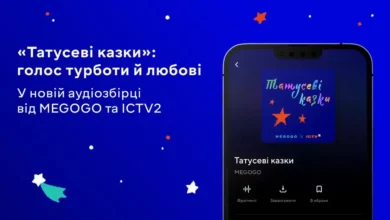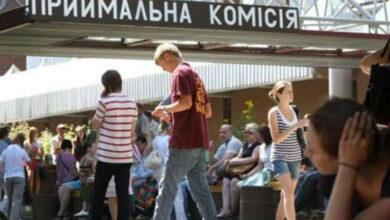Textbooks for a billion during wartime: who and how makes money on educational purchases while children need help

During the war, thousands of Ukrainian families were left without homes, means of livelihood, and their usual way of life. Children are especially vulnerable in such conditions – those who have been deprived of stability, access to quality education, psychological comfort and a basic sense of security by the war. For many of them, the only conventional support is the school, which, despite the state of war, distance learning or lack of resources, continues to work. That is why society reacts especially sensitively to how the state spends money in the field of education. Against this background, the recent decision of the Ministry of Education and Science of Ukraine to order the printing of textbooks for eighth-graders for a total amount of more than 1 billion hryvnias is of particular concern.
What the Ministry of Education ordered: without bidding and at a record price
During two weeks – from May 7 to 21, 2025 – the state scientific institution “Institute of Modernization of the Content of Education”, which is subordinate to the Ministry of Education and Science, signed a number of agreements on the printing of school textbooks for the 8th grade for a total amount of more than 1.06 billion hryvnias. The procurement was carried out without open tenders – in accordance with the current procedure, precisely those publishing houses that have exclusive property rights to the textbooks selected by the Ministry of Education and Culture receive orders automatically. That is, there was no competition on the market. About this are reported “Our money”.
The main part of the funds — more than 580 million — went to three companies: Kharkiv Ranok Publishing LLC, Kyiv Geneza LLC, and Ternopil Aston LLC. The biggest beneficiary was the Ranok company — more than 242 million hryvnias. It is worth noting that the same publishing house lost a significant amount of printed matter in 2024 due to the Russian shelling of the Factor-Druk printing house. in Kharkiv.
The most expensive textbooks
The price of one of the textbooks — the integrated course “Ukrainian language, Ukrainian and foreign literature” created by Ranok publishing house — caused the greatest resonance. Its circulation is only 481 copies, and the cost of one copy is 3,900 hryvnias. The textbook consists of two parts, each of 240 pages. The total cost of this separate order is almost 3.8 million hryvnias.
Expenses for the printing part amount to UAH 2,081. The remaining amount includes royalties, design, editing, typesetting, paper, cardboard, film and the 5% margin allowed by law. The previous project was in a similar situation – a similar textbook for the 7th grade, which was ordered by the same publishing house in 2024: 209 copies at UAH 3,976 each. But there, only 235 UAH were spent on printing, the rest of the expenses also went to “general publishing needs”.
Among the ten most expensive textbooks were also editions for students of schools with Polish, Hungarian, Bulgarian and French as the languages of instruction. For example, a textbook on the Polish language from the publishing house “Svit” will cost the state UAH 2,503 per copy with a print run of 220. Paper and printing in this amount are only 306 hryvnias, instead, the lion’s share is again made up of expenses for design, editing and fees.
The same publishers provided “Hungarian language” (902 UAH per copy), “Bulgarian language” (643 UAH) and “French language” (660 UAH). All of these editions also have relatively low print runs — from a few hundred to a few thousand copies.
Contrast: the cheapest textbooks
Against the background of the above-mentioned orders, the textbooks, which are really needed by the mass student population, look especially contrasting. For example, “Civic Education” from the publishing house “Education” will be printed with a circulation of more than 217 thousand copies and costs only 58 hryvnias per copy. A similar situation with the textbook “Entrepreneurship and financial literacy” — 59 hryvnias per copy with a circulation of 52,000.
Such a price gap is explained precisely by the number of orders: the smaller the circulation, the higher the cost price. But at the same time, it demonstrates the priorities of the system: does the state really invest resources in what is absolutely necessary, or in narrow specialized projects that, although they have educational value, serve a very limited circle of students.
Who is behind the publishing houses
Information about the owners of publishing houses who received million-dollar contracts is also of interest. Ranok is associated with Viktor Kruglov, the founder of Osnova, which in turn is affiliated with Triada Print and Vesta.
“Geneza” is controlled by Oleksiy Dubas, Viktor Yezlovetskyi, Oleg Furman and Vladlen Matsenko, and the director is Mykola Chayun. “Aston” is a Ternopil publishing house founded by Ivan Bilakh. It is these structures that over the years have dominated the field of state orders for school literature.
Political and reputational implications
A separate aspect is the content and design of the textbooks themselves. Thus, there was a wide resonance in social networks due to the photo of public figures and public figures in the Ukrainian language textbook for the 8th grade. Users actively discussed the appearance of portraits of Serhii Prytula, Maria Berlinska, Nikita Titov and Vasyl Baidak. Some took this as a sign of ideological commitment or the imposition of a certain system of views on students. Others, on the contrary, like the actualization of modern language through familiar faces. In any case, the society’s reaction once again demonstrated that the school textbook in Ukraine is not only an educational tool, but also a subject of political symbolism.
More than a billion hryvnias from the state budget for printing textbooks in 2025 is an amount that causes conflicting emotions. On the one hand, education cannot stop even during war. On the other hand, when millions of children live in evacuations, study in temporary premises or do not have access to a stable Internet at all, spending tens of millions on small-run textbooks with a price of almost 4 thousand hryvnias per copy looks debatable, to say the least.
At this very time, the state is not always able to provide children of vulnerable categories – displaced persons, orphans, students from the frontline areas – with even basic things: high-quality equipment for distance learning, stable Internet, psycho-emotional support. Such a discrepancy between the intended use of funds and real needs strengthens public distrust and the demand for transparency.
Education in wartime is a daily matter of fairness, trust and responsibility. And not only the quality of the educational process, but also the future of children who grow up in a country that is fighting for its existence depends on how and on what the state spends money.





